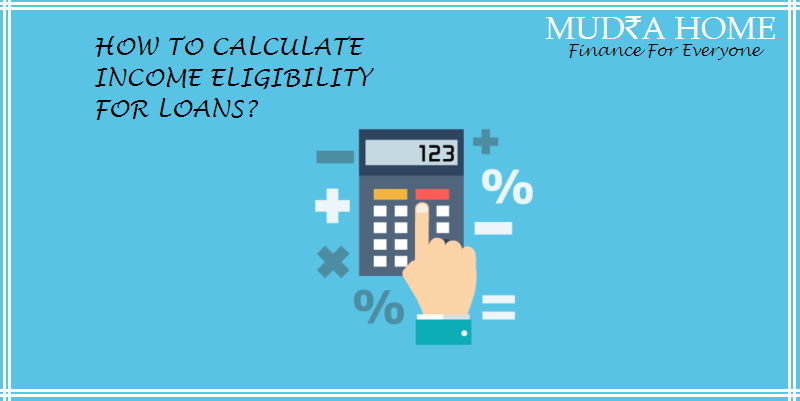Taking a loan is easier said than done, there are a host of factors on which the loan eligibility is dependent the most important is your Income and your capacity to re-pay the loan. The amount you can borrow depends on how much you can afford to repay every month in EMIs or Equated Monthly Instalments. What the bank calculates is 'how much you can afford to repay'.
Here is how they do it:
Step 1- Assessment of Monthly Income

Step 2- Calculating the monthly expense and savings
Then they wil l arrive at the amount you save on a monthly basis. Since savings depend on a variety of factors like income level, lifestyle as well as other necessary monthly expense like child education fee, utility bills payments, house hold expenses etc, there is a standard thumb rule of 50% of the incomes is required to meet these expenses and the balance is saving, this is what the banks assume for Salaried customers to arrive at the amount of 50% of the income a person can save in a month. For Self- employed the norms are relaxed to 65% of the monthly income. In banking terms this saving is termed as Fixed Obligation to Income Ratio (FOIR).
l arrive at the amount you save on a monthly basis. Since savings depend on a variety of factors like income level, lifestyle as well as other necessary monthly expense like child education fee, utility bills payments, house hold expenses etc, there is a standard thumb rule of 50% of the incomes is required to meet these expenses and the balance is saving, this is what the banks assume for Salaried customers to arrive at the amount of 50% of the income a person can save in a month. For Self- employed the norms are relaxed to 65% of the monthly income. In banking terms this saving is termed as Fixed Obligation to Income Ratio (FOIR).
This means, if your income is Rs 50,000 per month, the bank assumes that you can save upto 50%, which is Rs 25,000 per month.
The higher your income, the more you can save, so it is assumed that the more capacity you have to repay.
Step 3- Calculating the re-payment capacity

If you are already paying some other EMI, that amount will be reduced from the calculated savings. So if your savings per month is Rs 25,000 and you are paying an EMI of Rs 10000 on your car loan, the bank will arrive at a figure of Rs 15000 as your net savings. This saving is after meeting all your monthly expenses.
Step 4- Arriving on the final loan eligibility
 After that, the banks does a little backward calculations to find out the amount of loan that would result in an EMI equal to the amount that you can save. The bank uses the latest interest rate to calculate this.
So if your monthly net savings is Rs 15000, the bank assumes that that is the amount available to pay off the EMI. If the prevailing interest rate is 10% and you have applied for loan tenure of 10 years, assuming that the per lacs EMI is Rs 1322/- per month. Banks divides your monthly saving with the per lac EMI to arrive the loan amount you are eligible for.
Monthly Saving- Rs 15000
Per Lac EMI- Rs 1322
Loan Amount – Monthly Saving/Per Lac EMI
= 15000/1322
You will be eligible for a loan of Rs 11.35 lakh. This loan needs to be repaid in 120 Equal instalments of Rs 15000 each.
After that, the banks does a little backward calculations to find out the amount of loan that would result in an EMI equal to the amount that you can save. The bank uses the latest interest rate to calculate this.
So if your monthly net savings is Rs 15000, the bank assumes that that is the amount available to pay off the EMI. If the prevailing interest rate is 10% and you have applied for loan tenure of 10 years, assuming that the per lacs EMI is Rs 1322/- per month. Banks divides your monthly saving with the per lac EMI to arrive the loan amount you are eligible for.
Monthly Saving- Rs 15000
Per Lac EMI- Rs 1322
Loan Amount – Monthly Saving/Per Lac EMI
= 15000/1322
You will be eligible for a loan of Rs 11.35 lakh. This loan needs to be repaid in 120 Equal instalments of Rs 15000 each.

